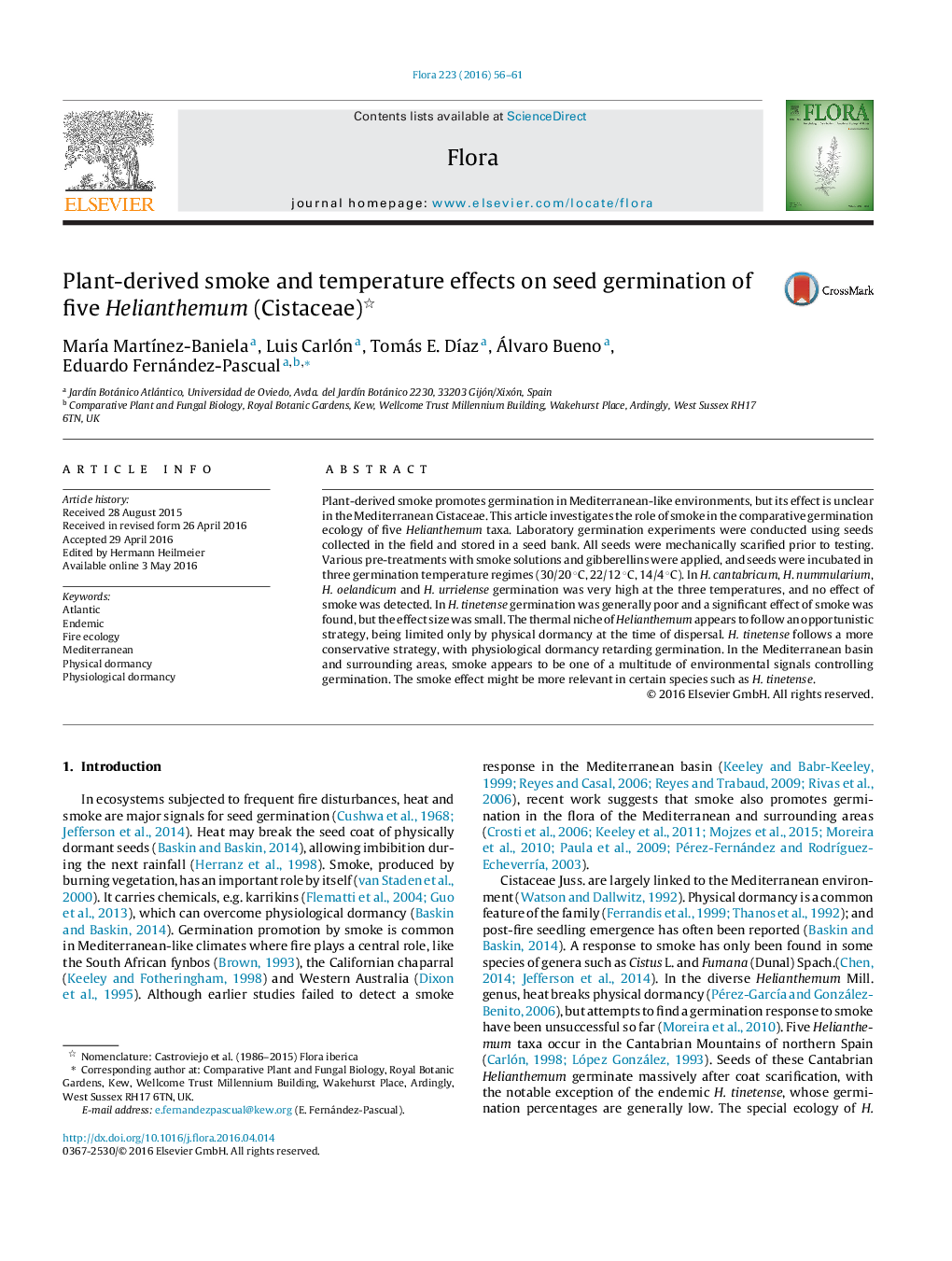| Article ID | Journal | Published Year | Pages | File Type |
|---|---|---|---|---|
| 8470274 | Flora - Morphology, Distribution, Functional Ecology of Plants | 2016 | 6 Pages |
Abstract
Plant-derived smoke promotes germination in Mediterranean-like environments, but its effect is unclear in the Mediterranean Cistaceae. This article investigates the role of smoke in the comparative germination ecology of five Helianthemum taxa. Laboratory germination experiments were conducted using seeds collected in the field and stored in a seed bank. All seeds were mechanically scarified prior to testing. Various pre-treatments with smoke solutions and gibberellins were applied, and seeds were incubated in three germination temperature regimes (30/20 °C, 22/12 °C, 14/4 °C). In H. cantabricum, H. nummularium, H. oelandicum and H. urrielense germination was very high at the three temperatures, and no effect of smoke was detected. In H. tinetense germination was generally poor and a significant effect of smoke was found, but the effect size was small. The thermal niche of Helianthemum appears to follow an opportunistic strategy, being limited only by physical dormancy at the time of dispersal. H. tinetense follows a more conservative strategy, with physiological dormancy retarding germination. In the Mediterranean basin and surrounding areas, smoke appears to be one of a multitude of environmental signals controlling germination. The smoke effect might be more relevant in certain species such as H. tinetense.
Related Topics
Life Sciences
Agricultural and Biological Sciences
Ecology, Evolution, Behavior and Systematics
Authors
MarÃa MartÃnez-Baniela, Luis Carlón, Tomás E. DÃaz, Álvaro Bueno, Eduardo Fernández-Pascual,
